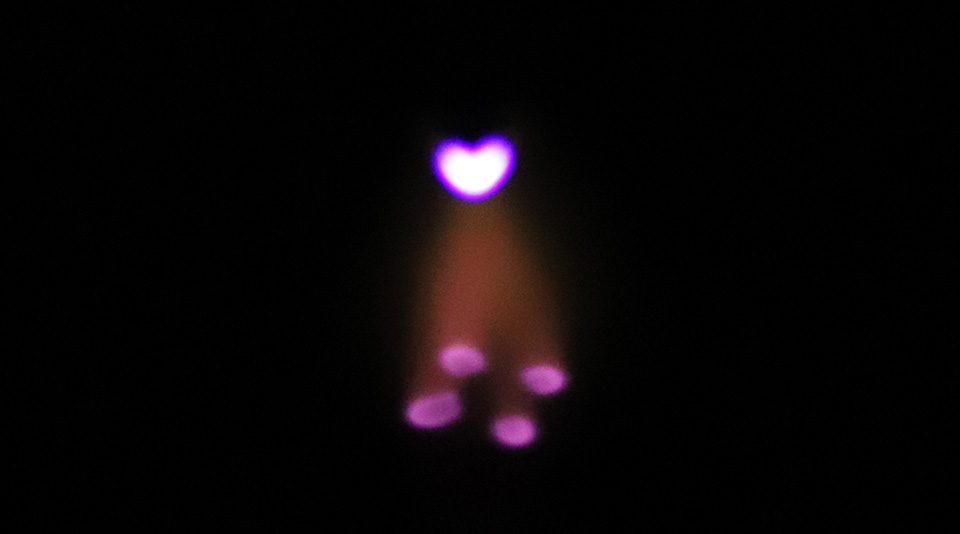Neither a solid, liquid, nor gas, plasma doesn’t play by the same rules as the other states of matter. Its unique properties are particularly evident at plasma-liquid interfaces, where chemical, electric and fluid forces collide to create waves.
In a recent paper in Physical Review Letters, engineers at the University of Notre Dame identify a new class of plasma-liquid waves that could be harnessed for multiple applications, from more effective water remediation technologies to gentler cancer treatments.
“You throw a rock in a pond and you see ripples move outward because you’ve deformed the surface,” said Paul Rumbach, associate teaching professor in aerospace and mechanical engineering at the University of Notre Dame and co-author on the paper. “At the plasma-liquid interface, electrostatic force deforms the liquid, creating waves and motion.”

To produce these waves, the team ran electrical current through a needle-shaped electrode suspended above a petri dish of saline solution. “You’d expect that the electrical current would generate just a single spot of plasma, like a flashlight beam on the surface,” said Rumbach. “But, if you turn up the voltage, that single spot turns into a ring, and, as you turn up the power higher, that ring breaks up into a pattern of spots that look like the petals on a flower.”
These floral plasma patterns often spin in a circle—a motion caused by the electrical interaction between the plasma and liquid.
A side-view shows liquid surface waves traveling outward, away from the plasma in the center. The speed of these waves is 10x slower than expected for water waves of this size. This effect is likely due to electrical interactions between the plasma and the water.
A high-speed video of a ring-shaped plasma with transverse waves traveling from one edge of the ring to the other.
A high-speed video shows the dynamic oscillation of a plasma pattern with four spots caused by waves on the water surface.
When a liquid is flat, the pressure on it is evenly distributed, however, when the surface curves, the pressure changes. These unusual plasma-liquid waves form when pressure exerted by the plasma (Maxwell pressure) interacts with a liquid surface that has been curved by electrohydrodynamic forces. Plasma and liquid motions fall into sync, thus amplifying each other’s effects.
Motion is an important byproduct of this process. Currently, the water contaminant PFAS (per- and polyfluoroalkyl substances) can be destroyed by plasma, only if it happens to be on the micrometers-thin, plasma-liquid boundary. The team’s plasma-generated waves could mix the contaminated water, directing toxins toward the surface to be irradiated and pushing the by-products away.
“Plasma is a gentler, more efficient form of radiation that can be used to destroy contaminants in water or treat cancer,” said Rumbach. “Understanding how it interacts with water is critical for developing these applications.”
In addition to Rumbach, postdoctoral scholars Oles Dubrovski and Jinyu Yang at the University of Notre Dame contributed to this research, which was supported by the National Science Foundation, the Army Research Office, and the Notre Dame (ND) and Pontificia Universidad Católica de Chile (UC Chile) Scholars Joint Research Award.
— Karla Cruise, Notre Dame Engineering; photo of Paul Rumbach by Wes Evard, Notre Dame Engineering; other photo and videos provided by Jinyu Yang.
Hero image shows a single beam of plasma that has organized itself into a floral pattern on the surface of water.
